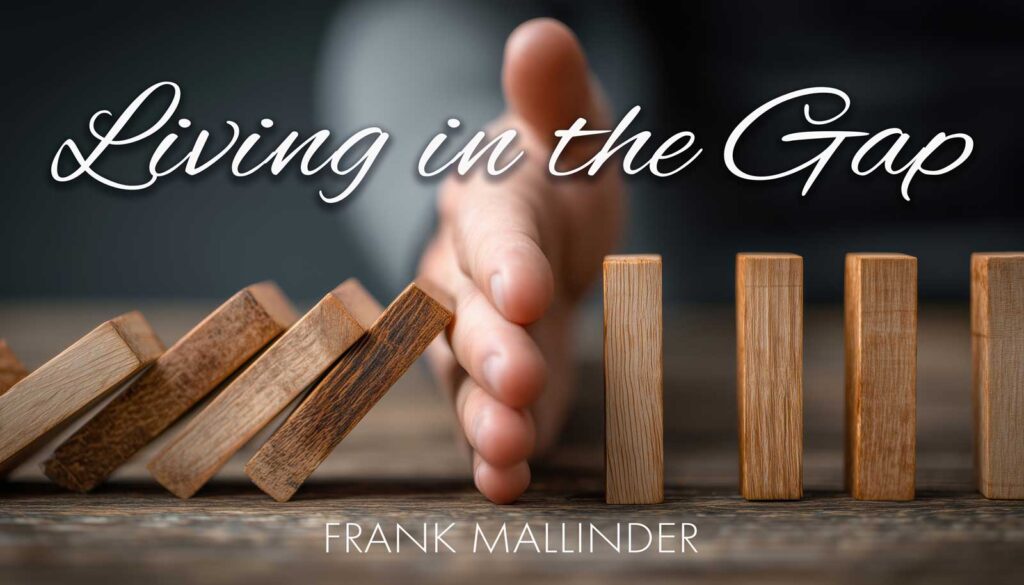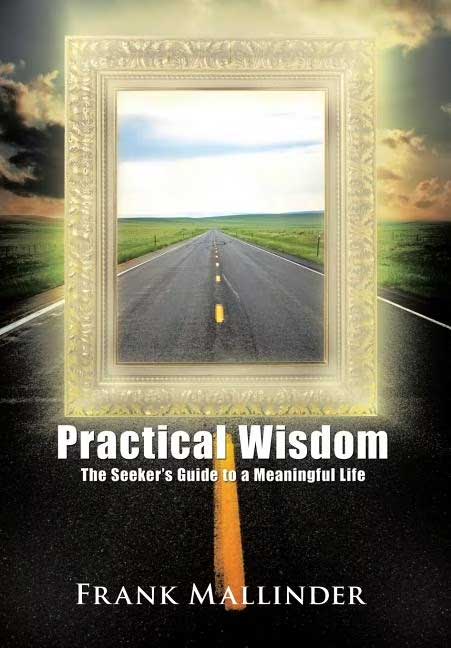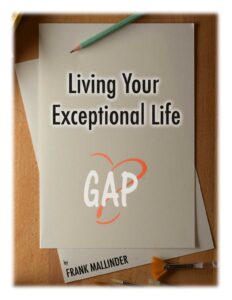
How the Space Between Stimulus and Response Shapes Your Life
Human behavior unfolds in a repeatable rhythm: stimulus → gap → response → result. While science gives us language for what happens in the brain, this model is best understood as a metaphor. It is a way to visualize what’s going on inside us when life presses a button. This metaphor blends psychology, neuroscience, and decades of coaching insight to help you see why you do what you do-and how to change it.
The Power of the Gap
Every day, life delivers a stream of stimuli-emails you need to read, junk email you don’t’ want, glances, headlines, memories, unpleasant interactions. Each trigger something in us. Between that trigger and our response lies a fleeting but powerful interval: the Gap.
In that space, our subconscious gets to work, running old programs that were built to keep us safe. Those programs form early, repeat automatically, and shape nearly everything that follows. What happens in the Gap determines the course of your day, your career, and ultimately, your life.
A Note on the Science Behind the Metaphor
While neuroscience confirms the principles of neural plasticity, prediction, and expectation, the Gap itself is not a mapped region of the brain. It’s a conceptual tool, a way to visualize the hidden workings of awareness.
Research supports its components:
- Neural creation and reinforcement (Hebbian learning).
- Recognition and prediction (pattern matching, predictive coding).
- Response automation (habit formation).
- Expectation and prediction error (the brain’s reward system).
So, this framework is scientifically informed, not scientifically claimed. It translates complex neuropsychology into language anyone can use to grow.
Four key subconscious processes
Understanding the Gap means understanding four key subconscious processes: creation, recognition, response, and expectation. Understanding how these four work will enhance your awareness and increase the probability that you can make the changes you desire in your life.
1. Creation
From childhood, we learn to recognize patterns in our environment and respond in ways that ensure safety and belonging. Repeated stimulus and response pairings carve pathways in the brain. As the neurons fire together, they wire together and create what neuroscience calls neural networks.
Over time, these networks automate our behavior, guiding how we react before conscious thought even joins the party. Once these pathways are formed, they repeat on autopilot until you intentionally practice a new response. That’s where conscious change begins; by creating new neural links through repetition and awareness.
2. Recognition
When a familiar stimulus appears, your subconscious recognizes it instantly. This is the brain’s efficiency system that matches the present to past experience. The process is supported by predictive coding, meaning your mind is constantly guessing what’s coming next based on stored data. You rarely see reality as it is, you see it through the lens of what your brain expects to see. With intention to change and a clarity on what you want to change, you can learn to recognize when a neural network is firing.
3. Choosing a Response
After recognition comes response, the action you choose to take. Your subconscious delivers the learned response. The response is fast, automatic, and familiar. This is where habits live.
But there’s a microsecond of freedom: the conscious Gap. If you catch it, and you can, you have the opportunity to choose a new response and begin rewiring your neural circuitry. Consistent, intentional practice builds new default settings-new patterns of being.
4. Expectation
Over time, the neural networks in our subconscious begin to shape an overall expectation of life itself. What began as specific patterns, responses to particular experiences, gradually expands into broader beliefs about who we are and what’s possible. A few early moments of failure or criticism can quietly grow into a global conclusion such as, “I’m not smart enough to be successful.” What is the phrase that runs through your brain and reflects your expectation for life?
Usually, a handful of powerful networks generate these life-wide expectations, not just reactions to isolated stimuli. They become the unseen code running in the background of our lives. When I ask people what they truly expect from life, there’s often a long silence. Many have been on autopilot so long they’ve stopped questioning those expectations. They assume life will continue as it always has because their subconscious predicts it that way.
Expectations can be a Barrier to Creating a Significant and Joyful Life
A frequent task in a coaching process is to ask the client to write a mission statement. A mission can bring clarity on how you want to live. Surprisingly, many people struggle with writing a personal mission statement. And even if they do write one, it gets put away in a drawer, never to be seen again. A mission statement is a declaration of potential; it spells out the life you could live. But for most people, that vision directly contradicts their long-held expectations about how life works. Their subconscious networks whisper, “That’s not who you are,” or “That’s not how the world treats you.”
So even when the conscious mind writes a beautiful mission, the deeper networks resist, because the statement threatens the old internal model of reality. Living the mission requires not just inspiration but a gradual rewiring of those networks, so that talent, belief and behavior align. Once that shift occurs, the mission stops being words on a page and starts becoming the architecture of a new life.
Expectations for life can be changed
The good news is that the patterns stored in your subconscious aren’t permanent. The brain’s neural networks can be rewired through awareness, emotion, and repetition. Each time you catch an old story, “I can’t,” “I always fail,” “It never works out”, choose to act against that old pattern/story and begin creating a new circuit. At first it feels forced because the new pathway is fragile. But every intentional act of courage, curiosity, consistency, and repetition of your smile exercise strengthens it.
With time and practice, your subconscious begins to expect something new. The prediction engine shifts from limitation to possibility. That’s the quiet moment when your inner wiring starts working for you instead of against you. And, your life begins to reflect it.
Living in the Gap
Every change you’ve ever made started with awareness. It is the moment when you noticed the Gap and decided not to run the old program.
This model isn’t about controlling every thought. It’s about learning to see the space where your old patterns in your subconscious once ruled and reclaiming it for your conscious, creative self.
The Gap is real, even if it’s not a structure in your skull. It’s the inner pause where choice lives-the place between reflex and intention, where human freedom actually happens. Once you learn to live there, you stop being a passenger in your own life. You start being the author.

Practical Wisdom: The Seeker's Guide to a Meaningful Life by Frank Mallinder
Untapped potential exists within all people. In Practical Wisdom, author and intuitive coach Frank Mallinder shares practical wisdom that can help individuals live purposeful, high-energy lives that truly match their distinctive talents and capabilities. Filled with real-life examples, Practical Wisdom gives simple yet powerful steps that can dramatically improve people's lives. Mallinder helps readers face their fears of making big life changes and assists them in determining how their talents can be used and challenged every day through these objectives. Built on a technique guided by the four Cs - courage, clarity, commitment, and compassion - Mallinder shows how people can create new soul-enriching and ambitious life patterns by choosing to do what they've always wanted to accomplish in many aspects of their lives.
Hero image © Adobe stock. Licensed and edited by A.D. Cook.
Practical Wisdom book graphic © Frank Mallinder.
- About the Author
- Latest Posts
- More info
Having and living your mission is a driving force in Frank’s life and his coaching. His mission is “To experience the joy of living on purpose, sharing what he learns with other seekers. And for thirty years, he has been doing just that.
To learn more about how to live a life of significance, read “Practical Wisdom – The Seekers Guide to a Meaningful Life” by Frank Mallinder.




